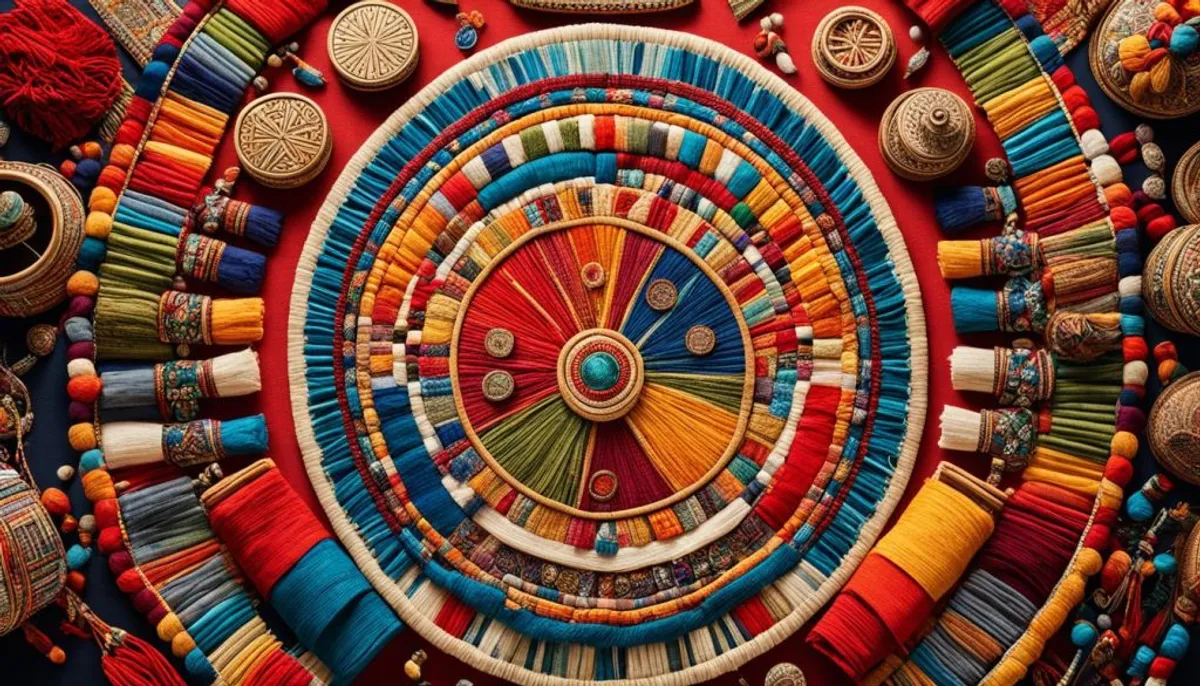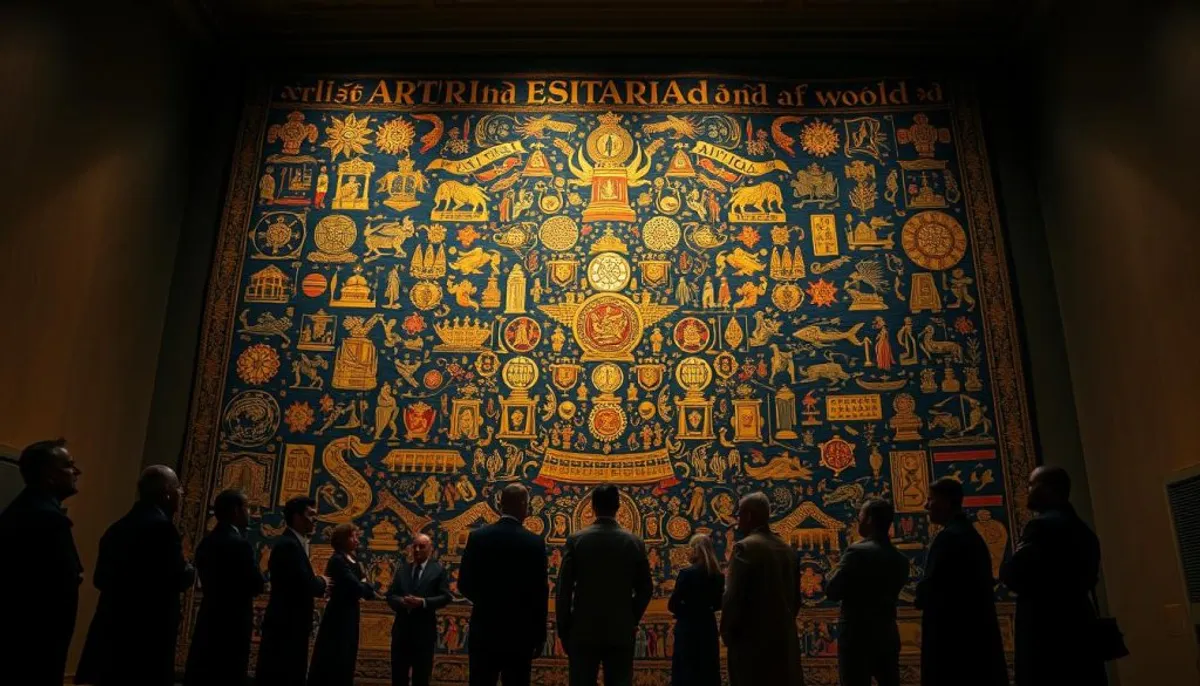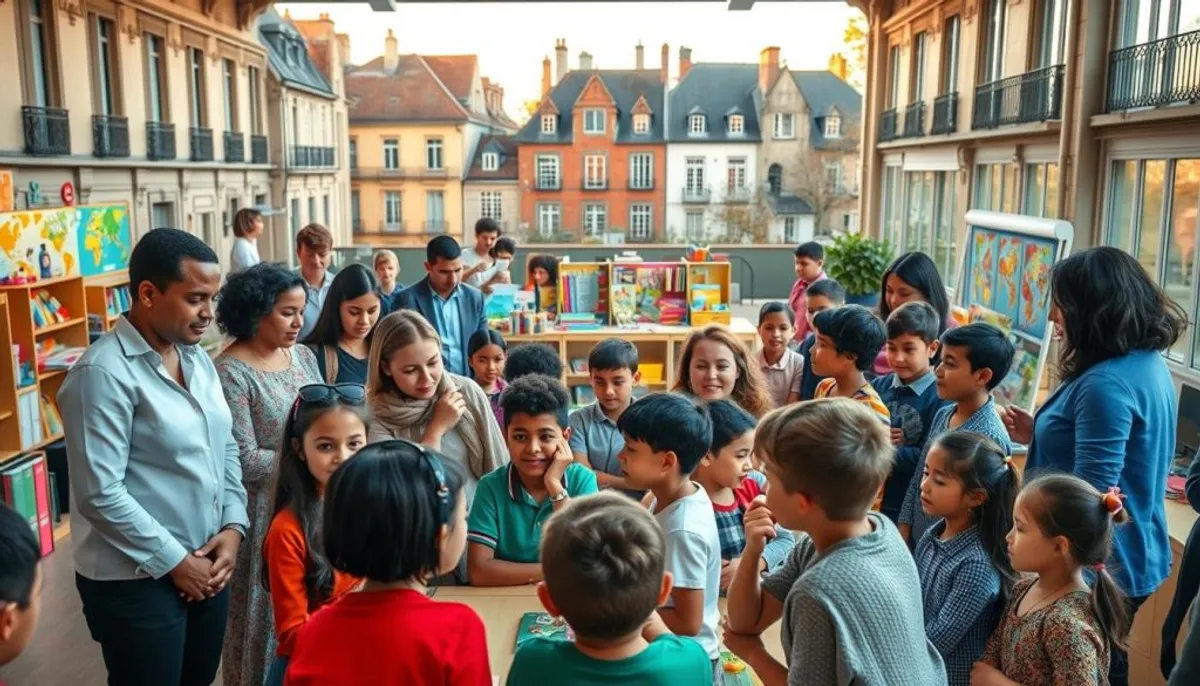The question of whether to prioritize cultures is at the heart of contemporary debates. In our globalized world, cultural diversity is an unavoidable reality. Cultural relativism raises questions about how we perceive and value different traditions.
The evolution of the teaching of civilization in France illustrates these issues. In 1992, civilization became a mandatory subject for the CAPES in English. Six years later, it gained equal status to literature in the aggregation. These changes reflect the growing importance placed on understanding cultures.

However, the term “civilization” remains controversial. Some consider it laden with ethnocentric connotations. This reflection invites us to rethink our approaches to cultural diversity. We must explore pathways for a balanced intercultural dialogue.
Definition and Fundamental Concepts of Cultural Hierarchy
Cultural hierarchy is a complex subject, evoking deep questions about cultural identity and human diversity. To grasp this concept, it is crucial to explore its origins and implications.
The Notion of Culture and Its Multiple Dimensions
Culture encompasses the traditions, beliefs, and practices of a group. It shapes the cultural identity of each individual and influences our perception of the world. UNESCO emphasizes the importance of understanding each culture's contribution to human civilization.
The Emergence of the Debate on Cultural Hierarchy
The debate on cultural hierarchy gained importance after World War II. Claude Lévi-Strauss played a crucial role in opposing racist ideologies. He asserted that no human group can be considered superior to another, challenging the notion of cultural superiority.
The Historical Foundations of Cultural Comparison
Ethnocentrism, a deeply ingrained psychological behavior, has long influenced our perception of different cultures. Historically, humanity has been slow to develop a universal notion encompassing all groups. Ethnological studies reveal that for millennia, the notion of humanity did not extend beyond tribal or linguistic boundaries.
Franz Boas conducted important research on the plasticity of human physical characteristics. His studies questioned the idea of a stable biological basis for race, showing that physical traits can change in new environments. These discoveries contributed to challenging the foundations of cultural hierarchy based on physical criteria.
Should Cultures Be Hierarchized: The Contemporary Debate
The issue of cultural hierarchy sparks lively debate in our society. This question highlights profound issues, notably the clash of cultures and racism. It is essential to examine the various facets of this controversy.
Arguments in Favor of Hierarchy
Some advocate for the hierarchy of cultures. They cite criteria such as classical education, long perceived as a sign of prestige. A study reveals that education in Latin and Greek remains a selective criterion in prestigious school competitions.
Critiques of Absolute Cultural Relativism
Absolute cultural relativism is criticized. Pierre Bourdieu argues that “high” culture is a tool of domination. He speaks of “symbolic violence” to describe how disadvantaged classes accept their cultural inferiority compared to dominant norms.
The Question of Universalism and Cultural Particularism
The debate contrasts universalism with cultural particularism. The evolution of cultural perceptions is notable: jazz, once considered popular, gained more legitimacy in the 1960s thanks to France Culture.
| Type of Universal | Description |
|---|---|
| Simple Universal | By standardization |
| Universality | By derealization of difference |
| Complex Universal | Dialectical |
The question of whether cultures should be hierarchized remains open. It requires deep reflection on our values and our vision of cultural diversity.

Interculturalism as an Alternative to Hierarchy
Interculturalism represents a major challenge for the future French society. It offers a promising alternative to the hierarchy of cultures. This approach fosters a rich intercultural dialogue and a harmonious cultural integration.
The Concept of Interculturality and Its Implications
Interculturality transcends mere coexistence of cultures. It involves thoughtful interactions and a deep questioning of our relationship with ourselves, others, and the world. This perspective challenges traditional paradigms of assimilation and communitarianism, which have shown their limits.
The Dialogue Between Cultures as a Solution
Intercultural dialogue is at the heart of this approach. It allows us to overcome prejudices, including ethnocentrism, and to build bridges between different communities. In France, despite criticisms from some ideological groups, intercultural educational practices are emerging to counter the dominant monoculturalism.
The Conditions for Equitable Cultural Exchange
To ensure equitable cultural exchange, several conditions, including a social critique, are necessary:
- Proper training in managing cultural diversity
- Acknowledgment of the complexity of cultural identities
- Mutual engagement of migrant and local populations
- Combating feelings of shame and marginalization
Cultural integration should not come at the expense of original identities. It requires an open mind and mutual tolerance. This allows everyone to thrive in their uniqueness while participating in the construction of a plural and inclusive society.
The Political and Social Stakes of Cultural Diversity
Cultural diversity in France raises crucial questions for society and the educational system. With 25% of public school students from immigrant backgrounds, cultural integration becomes a major challenge. The debate on common culture divides opinion, with 55% supporting a unified national culture against 45% advocating for better recognition of diversity.
Education plays a key role in this context. The graduation rate exceeding 85% reflects the progress made. However, inequalities persist in access to higher education, with gaps of up to 30% between different socio-economic levels.

French municipal libraries, adhering to the republican model of integration, struggle to fully recognize cultural diversity. Their actions often remain sporadic and improvised, lacking a systematic strategy. This situation highlights the need for a more structured approach to measure and evaluate diversity in public programs.
| Aspect | Percentage |
|---|---|
| Students from immigrant backgrounds | 25% |
| Support for a unified national culture | 55% |
| Advocacy for recognition of diversity | 45% |
| Graduation rate | 85% |
| Access gap to higher education | 30% |
In the face of these challenges, it is essential to rethink cultural integration and diversity policies in French education and public institutions. A more inclusive and structured approach could contribute to better social cohesion while preserving the richness of cultural diversity.
Multiculturalism Facing Integration Challenges
Multiculturalism, as a political philosophy, highlights complex cultural integration issues. It applies differently depending on the countries, reflecting distinct national realities.
Models of Managing Cultural Diversity
Approaches to multiculturalism vary considerably. In Canada, the evolution of terms designating majority and minorities illustrates a unique multicultural framework. Quebec, for its part, favors interculturalism to promote harmonious integration. These models aim to balance diversity and social cohesion.
The Limits of Multiculturalism
Since the 1990s, multiculturalism has been subject to discordant evaluations. Some experts argue that it minimizes racism and isolates ethnic conflicts. Others point to the risk of self-marginalization of minorities. These critiques underscore the need to rethink the multicultural approach to preserve cultural identity while promoting integration.
Towards a New Approach to Cultural Coexistence
In the face of these challenges, new perspectives are emerging. Intercultural dialogue, promoted by the Council of Europe, aims for mutual understanding between diverse groups. Some theorists advocate for a bifocal dialogue between majorities and minorities, respecting the constitutive values of the host society. These approaches seek to reconcile cultural diversity and social unity, essential for successful integration.
Conclusion
The question of whether cultures should be hierarchized remains a subject of debate. Our analysis has shown that cultural relativism, while essential, is not sufficient to grasp the complexity of cultural interactions. Power relations between cultures exist, but they do not simply manifest as one culture dominating another.
Intercultural dialogue presents itself as a promising alternative to hierarchy. It allows for the appreciation of diversity and heterogeneity of cultures while encouraging exchanges and mutual understanding. Popular cultures, for example, demonstrate a capacity for resistance and innovation, integrating original and imported elements.
Ultimately, it is more relevant to consider cultures as dynamic entities in constant evolution. Modern societies must cultivate an open mind to appreciate the richness of each culture. This involves fostering constructive and equitable intercultural dialogue.
RelatedRelated articles


